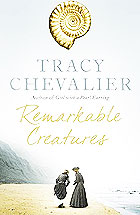taken from The Book by Ellen Handler Spitz
Year after year, we print and re-print fairy tales. What is it that makes them valuable? Should we keep telling them, and if so, why? What about their detractors, the self-appointed child protectors who complain about their violence and cruelty, not to mention a different set of worriers who protest their “false” happy endings? And surely the tales do not teach morality. Remember the egregious brutality of that spoiled princess in
The Frog King who, after hurling the little animal who helped her against the wall, gets rewarded. And we quail at even a mention of
The Jew in the Brambles, an outrageous portrayal of barbarism and prejudice, which, in Maria Tatar’s new selection of the Grimm fairy tales, wisely appears only in a separate section marked for adults.
Nor do the tales psychologize or philosophize. What they do, instead, is what all great children’s literature does: they literalize metaphor. They lower their glittering buckets deep into the psyche’s well. Loyalty lifts spells. Jealousy becomes murder. Love trumps death. Fortune reverses. Wishes come true.
Not quite like ancient myths, which use nymphs and satyrs to explain recurring natural phenomena; nor like fables, whose timeless moral lessons are parlayed through the escapades of animal characters; nor like legends, which exude the pungent aromas of one particular locale and its history, fairy tales are stories spun into gold at the wooden wheel of a miller’s daughter: stories made to summon wonder, horror, enchantment—and not necessarily anything more. Uncanny in the purest sense of the word, which is to say, both bizarre and familiar at once, they are meant to be told, not read, and they truly possess an inexhaustible power. Children hold on tight, turn pale, close their eyes, and beg for more.
The Grimm Reader, a compilation of fairy tales by the Brothers Grimm, newly translated by Tatar, who has published voluminously and illuminatingly on these writings for decades, comes to us with a mischievous title. It reminds us that, in the wake of global terrorism, parents and teachers are questioning ever more nervously what sort of tales we ought to be telling children and why. In
Lilith some years ago, Naomi Danis aired these anxieties, with responses from twenty writers and editors associated with children’s literature, a significant number of whom warned against “smarmy” sentimentality and against books that offer superficial “healing.”
READ MORE....








